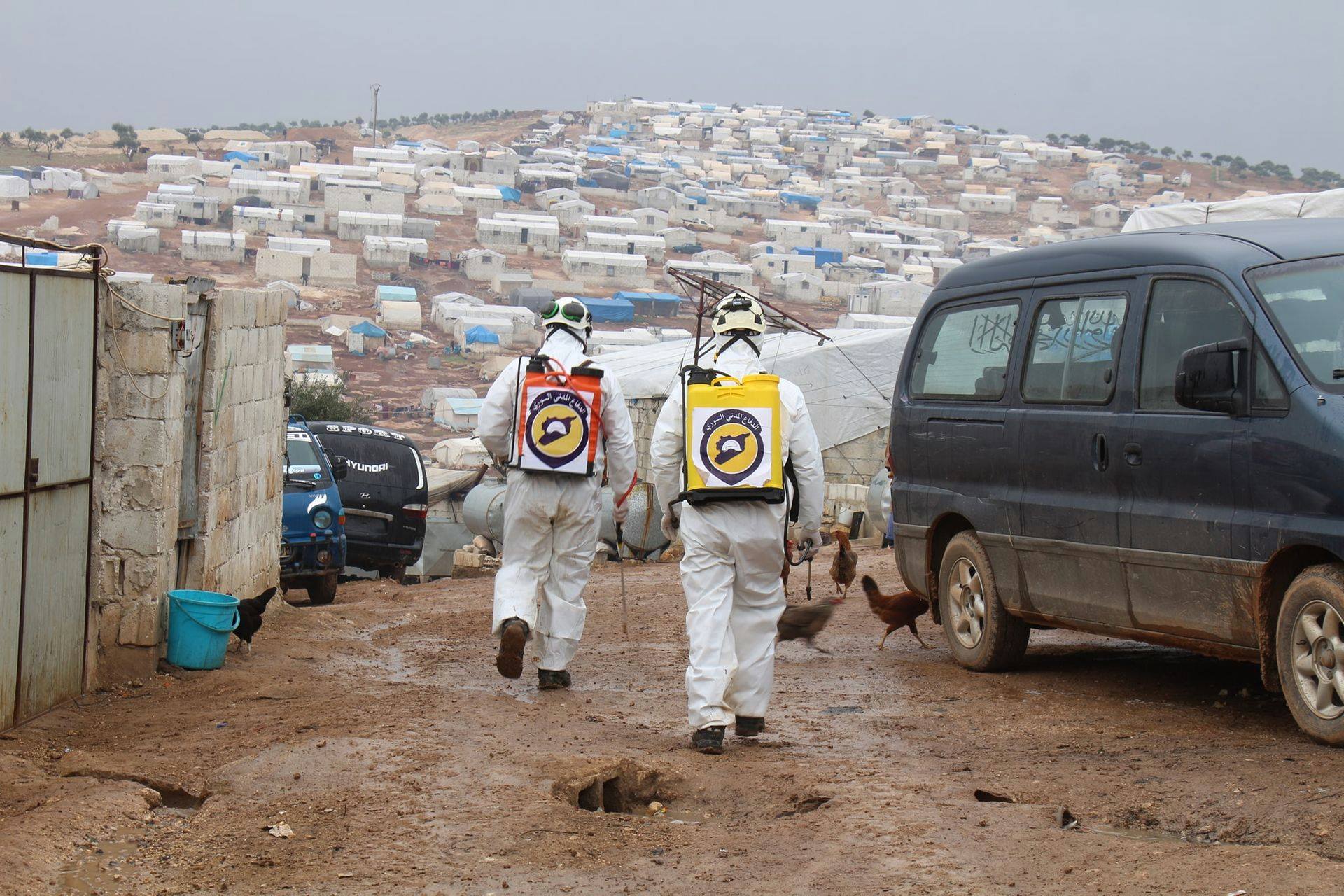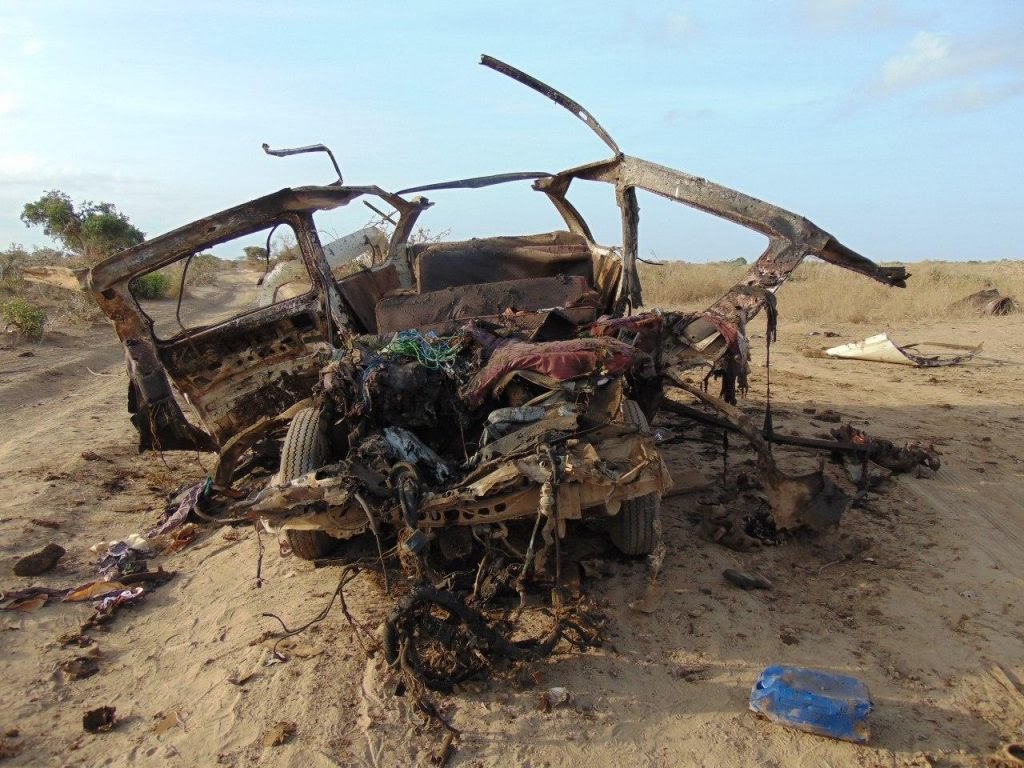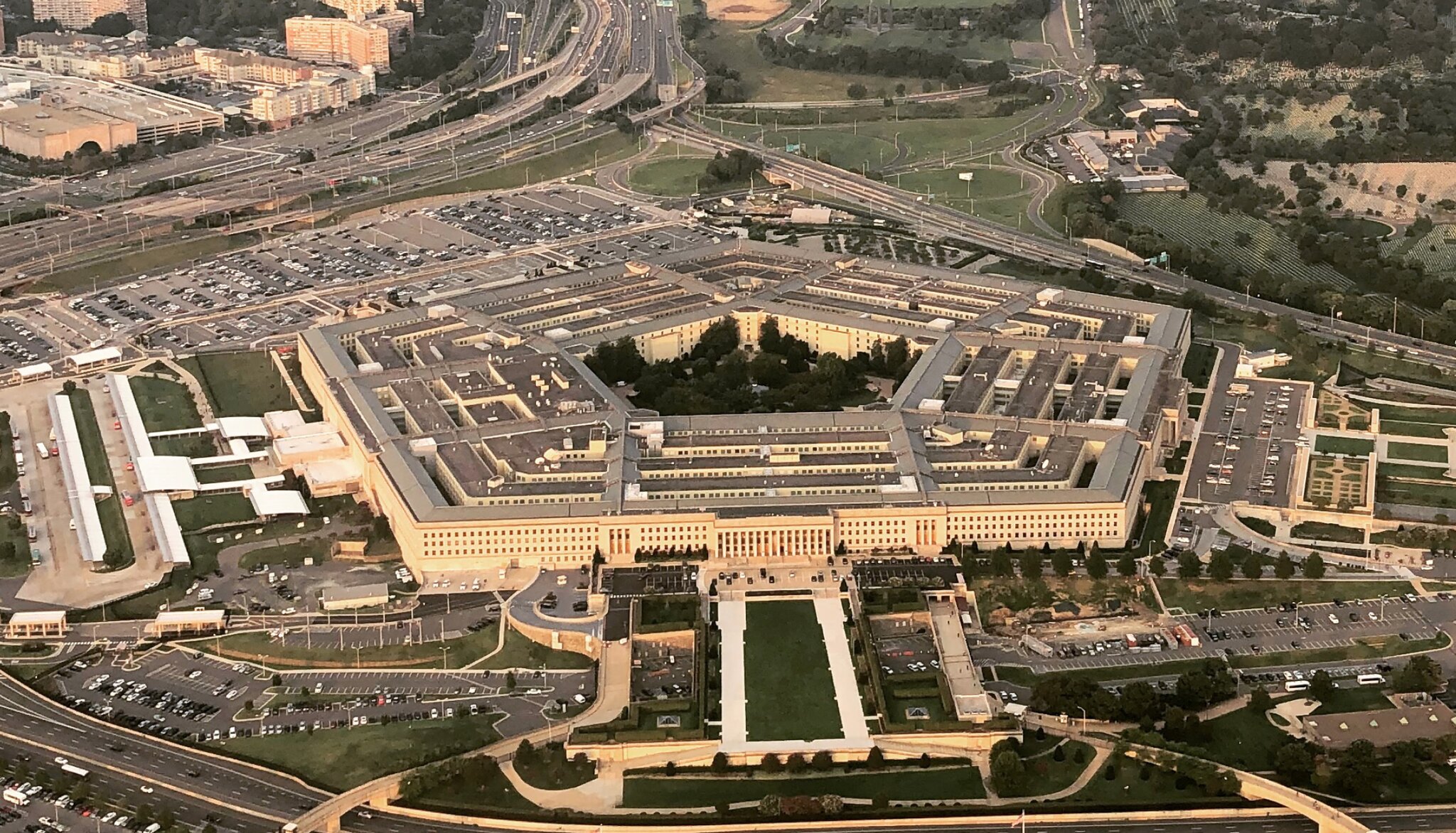Fighting grinds to a halt in Idlib following ceasefire, but civilian harm incidents reported in other parts of Syria, Libya and Somalia.

As the COVID-19 pandemic morphed into the most widespread global public health crisis in a century, there were growing calls for an end to conflicts around the world in order to give public authorities the respite needed to manage the crisis. This, along with Turkey’s unprecedented intervention in Idlib at the end of February, prompted Presidents Vladimir Putin and Recep Tayyip Erdogan to hold high-level talks in Moscow on March 5th. Six hours of negotiation concluded with a ceasefire agreement, which would take hold the next day.
As part of the deal, a security corridor 6km north and 6km south of Idlib’s key M4 motorway, which connects the government-held cities of Aleppo and Latakia, would be created and joint Turkish-Russian patrols along the M4 would take place. According to local sources, there were reports of Syrian Regime bombardment on the first day of the ceasefire on the towns of al-Ziyarah, Bara and Sarmin. However, from March 7th onwards, the ceasefire was largely maintained by both sides. As a result, Airwars researchers reported no civilian harm allegations attributed to Russian airstrikes after March 5th.
However before the ceasefire came into effect, Airwars tracked 10 locally reported civilian harm events that were both solely and partially attributed to Russia. Of these strikes, seven targeted areas in Idlib governorate, while two took place in Aleppo and one strike hit an area in Hama.
Unsurprisingly, this represented a dramatic decline in alleged civilian harm incidents attributed to Russia duringFebruary. In total, across these 10 new incidents in March, between 32 and 48 civilians were allegedly killed by Russian strikes – in comparison to between 182 and 226 civilians who were reportedly killed the previous month. Among the latest victims were up to 12 children and 7 women. Up to 86 further non-combatants were reportedly wounded during the month by Russian military actions.
While the number of casualties was significantly lower, it is important to note that the number of civilian fatalities per incident was actually higher this month than in February. In March, on average up to 4.8 civilians were killed per incident – more than double the fatality rate per incident for February, which stood at 2.1. This suggests that a greater proportion of strikes took place in densely populated areas where the risk of civilian harm was high.
On March 1st four civilian harm incidents took place. Two occurred in Aleppo governorate (the towns of Kafar Natin and al-Sahara), one took place in the town of Qatoun in Hama, and one in Batneta in Idlib. All the other incidents during March took place in Idlib.
Two of the most devastating airstrikes occurred in al-Fou’a on March 2nd and in Idlib city. In al-Fou’a, local reports estimate that up to 11 civilians were killed and 15 more injured in an attack. The day after in al-Thalatheen Street in Idlib city, up to nine civilians were killed and 21 more were injured after Russian warplanes and Regime forces based in Saraqib allegedly targeted a building sheltering internally displaced persons (IDPs). According to the Syrian Network for Human Rights, three members of the Hamdou family were killed including two children named Rimas and Shahem.
However, the most deadly attack this month came on March 5th, on the day Presidents Putin and Erdogan held their talks in Moscow. This alleged Russian airstrike, which many local sources described as a “massacre” hit a shelter for displaced families in Ma’arat Masrin in the northern countryside of Idlib, killing up to 16 civilians and injuring another 32. As many as five children were among the dead, as well as seven women.
طائرات الاحتلال الروسي تقتل 16 مدنياً في "معرة مصرين" بريف #إدلبhttps://t.co/XihIwSITOg#سوريا #روسيا pic.twitter.com/qSwChrSJL3
— الائتلاف الوطني السوري (@SyrianCoalition) March 5, 2020
The deal signed between Presidents Putin and Erdogan in Moscow on March 5th effectively saw the end of Turkish military actions in Idlib and northwest Syria. However, there were several reports of civilian harm incidents that were attributed to Turkish actions in other parts of Syria after March 5th. In fact, despite the ceasefire in Idlib and Turkey supposedly de-escalating its intervention in Syria, Aiwars reported a slight rise in alleged Turkish civilian harm incidents in the month of March – though with a lower death toll from these actions compared to February.
According to local reports, as many as 10 civilian harm incidents allegedly resulted from Turkish-led actions, resulting in 4 civilian deaths and injuring up to 27 others. In comparison, February saw nine civilian harm incidents, resulting in six civilian deaths and the injuring of up to 22 others. Furthermore, children appeared to bear the brunt of these recent attacks, as three of the four civilian deaths reported were below the age of 17.
Three days before the ceasefire deal was signed, on March 2nd pro-Regime sources claimed that Turkish-led shelling on the town of Jourin in Hama had resulted in the deaths of a woman and a child, and the injuring of seven other civilians. This incident resulted in the most civilian casualties out of all Turkish incidents alleged this month.
https://twitter.com/HarbiehNadie/status/1234552547345666050
According to Airwars data, alleged Turkish-led attacks on civilians spiked in the last week of March. Half of the incidents recorded took place during that week. On March 23rd, the Syrian Observatory for Human Rights reported that an elderly man was injured in an artillery attack allegedly carried out by Turkish backed forces on the village of Um al-Hawaash in northern Aleppo. Two days later, Turkish-backed Faylaq al-Majd forces allegedly stormed the village of Sukariya in Tal Abyad district, injuring four people, including a child. On that same day, a child was killed and two others were injured in an alleged Turkish landmine explosion in the village of Zaytouna in Tal Abyad countryside. The following day, March 26th, Turkish forces stationed near Azaz reportedly fired rockets towards Tal Rifaat, injuring two civilians displaced from Afrin.

Image via ANF of a child who was injured following alleged Turkish shelling on the village of Sheikh Issa in Shehba, Aleppo.
Airwars researchers tracked four alleged civilian harm incidents linked to Kurdish counterfire actions in Syria in March – the name number of incidents reported in February. However, significantly more civilian deaths were reported. As many as seven civilians were allegedly killed from Kurdish actions compared to only one death tracked the previous month. Additionally, between 12 and 25 civilians were reportedly injured in these attacks.
The most deadly incident took place on March 18th in the city of Afrin. According to Al Modon news, YPG forces allegedly launched five mortars on various areas in the centre of Afrin. Two shells fell near the Dersem Hospital in Al-Failat Street, and two more near the Al Shifa’ Hospital near Mazout Street, witha shell also landing on Mazout Street. These attacks resulted in five civilian deaths, including two children, and injured up to 17 others. The Syrian Human Rights Committee published the names of the two children killed – Abdullah Al-Sayyid (10 years old) and Khaled Al-Daba’an (12 years old).
March was yet another relatively quiet month for the US-led coalition in Syria, with no allegations of civilian harm attributed to the International Coalition. The Coalition declared a total of 28 strikes in Syria and Iraq in the month of March. In Iraq, 20 strikes were conducted against ISIS targets, killing 10 militants, CJTFOIR asserted. Meanwhile in Syria, the Coalition launched eight strikes against ISIS targets.
However, March did see a renewal of claims of unilateral actions by the United States. There were reports of at least four airstrikes in eastern Syria, all of which hit areas in Al Bukamal in the Deir Ezzor Governorate. The first set of strikes of the month took place on March 11th on the villages of Al-Suwayyah, Al-Heri, and the Green Belt near the city of Al Bukamal. These airstrikes reportedly targeted sites belonging to Iran-backed Iraqi armed groups such as Harakat al-Nujaba, the Sayed Al-Shuhada Brigades, and the Haydarioun Brigade. The next day saw another set of airstrikes against the same targets in Al Bukamal. One week later, on March 19th, there were reports that the US hit targets belonging to Iranian-backed groups in Albu-Kamal. Finally, on March 24th, US airstrikes once again allegedly targeted Hezbollah positions in the Albu-Kamal area. It should be cautioned that Israel has continued to conduct its own strikes in Syria against Iranian- and regime-linked targets, and the US has not confirmed any unilateral actions, despite local claims.
In Iraq, the US launched airstrikes in the early hours of March 13th on five sites, where rockets and other weapons were stored by Kata’ib Hezbollah. These strikes came in retaliation against a rocket attack that killed two Americans and a British soldier and wounded 14 others at Camp Taji, an Iraqi military base north of Baghdad. That attack was allegedly carried out by a group known as Isabat al-Tha’ireen, believed allied to other Iran-backed groups in Iraq. According to Gen. Kenneth F. McKenzie, the head of the US military’s Central Command, one of the five sites attacked by the US in response was a weapons storage site at an airfield in Karbala. However, local reports asserted that the airstrikes hit an unfinished civilian airport, killing three Iraqi soldiers, two police officers and a civilian worker named Kerrar Sabbar.

Image via @AIaaAIaabadi of Karrar, a guard at the Karbala International Airport, who was reportedly sleeping in one of the airport’s halls at the time of the attack, and was killed.
Allegations of civilian harm in Libya remained stable compared to February. Between 17 and 19 civilians were reported killed, a slight decrease on the previous month’s 18 to 23 deaths The number of locally reported strikes increased however by 33% – up from 128 to 163.
The great majority of civilian harm incidents were attributed to the Libyan National Army (LNA). As Khalifa Haftar’s forces lost the ability to conduct drone strikes on Tripoli due to improved Turkish air defence it resorted mostly to artillery shelling, allegedly resulting in 16 to 18 civilian deaths. Altogether 58 LNA actions were recorded, nearly all of them artillery strikes.
In the worst locally reported incident of the month, four civilians, three of them children, were allegedly killed by an LNA artillery strike on Ain Zara on March 19th.
March saw the return of Turkish Bayraktar TB2 drones over Libya, helping the GNA (Government of National Accord) to regain some ground. Airwars recorded 20 GNA or Turkish strikes, allegedly leading to one civilian death and two injuries on March 28th.
A large number of strikes could not be attributed once again, most of them indiscriminate artillery shelling often hitting residential areas. Some 81 strikes were conducted by unknown belligerents and two more were contested between the GNA and LNA, reportedly resulting in two civilian injuries.

Image via Tk Yahroug Kl shy of Smoke rising over the Hadaba project area of Tripoli after shelling on March 25th 2020.
In March Airwars monitored 15 claimed US actions in Somalia, one more than in February and all of which were airstrikes. AFRICOM officially declared 11 strikes in public press releases.
Between four and eight civilians were allegedly killed in three civilian harm events and two more civilians allegedly injured.
In the worst locally reported incident between four and six civilians were said to have been killed by an airstrike near Janaale on a minibus on March 10th.
The Intercept investigated the event and reported that 13-year-old Abdi Farhan Mahmoud and 70-year-old Abdirahman Ali Waadhoor were among the victims. The magazine spoke to Wadhoor’s son who said that his “father is a disabled man. He never had a problem with anyone.”
AFRICOM initially said it killed five Al Shabaab terrorists. It added however that it was currently reviewing information about alleged civilian harm.
In early March, Airwars also held constructive talks at the Pentagon in Washington DC with senior US defence officials, on its new Somalia monitoring project and civilian harm concerns.

Image via Somali Memo of a minibus allegedly destroyed by a US strike near Janaale on March 10th, 2020, which reportedly killed several civilians.
According to CENTCOM, there were no US military strikes during March 2020 in Yemen. The last publicly declared CENTCOM action was on June 24th 2019 in Al Bayda province. Airwars researchers also tracked no local claims of US actions in Yemen during the month.
There were no publicly alleged CIA strikes in Pakistan against either Al Qaeda or the Taliban during January. The last such reported US strike was in August 2018.
During March, the US-led Coalition fighting ISIS in Iraq and Syria released two monthly civilian casualty reports – covering respectively up until January and February 2020. Of the 79 historical local Iraqi and Syrian allegations reviewed by the Coalition, only one was determined to be credible – a disappointing tally.
In total to March 31st 2020, the US and its allies had conceded at least 1,377 civilian deaths from their actions across Iraq and Syria since 2014.
The one case conceded by the Coalition in March was an Iraqi event which had previously been flagged by Airwars to CJTFOIR. On September 27th 2015, an unknown aircraft had struck the town of Duquq, killing at least seven civilians according to local reports. Almost five years on, the alliance finally accepted responsibility, noting that “Coalition aircraft conducted an airstrike against Daesh fighters. Regrettably, seven civilians were unintentionally killed as a result of the strike.”
Just prior to the global travel lockdown, Airwars also joined several other international NGOs and agencies in Washington DC, for roundtable talks with Acting US Under Secretary of Defense for Policy, Dr James Anderson, and other senior officials. The meeting was part of an ongoing Department of Defense policy review into civilian harm reduction, which is expected later in 2020.
Airwars was also a signatory to new civil society guidance for a model DoD policy on civilian harm, which included six policy papers directed at different aspects of casualty mitigation.

Airwars attended both multilateral and unilateral talks at the Pentagon in March (Creative Commons image via Wiyre Media)
On March 10th, our European advocacy officer attended the European Forum on Armed Drones meeting in Brussels, where we presented on our new Somalia database to some of our European partners.
Airwars’ deputy director also engaged in talks with EU officials on their Concept of Protection of Civilians in EU-led Military Operations and provided our expert knowledge on matters such as civilian harm, the protection of civilians, and civilian harm mitigation.
On March 15th, Airwars published a major investigation with international media partners on how key European allies are denying dozens of civilian deaths from their own actions in Syria and Iraq, despite the US-led Coalition finding these civilian harm claims to be credible. The nine-month-investigation with Belgian newspaper De Morgen, French newspaper Liberation, the BBC and RTL Netherlands revealed some shocking facts about how Belgium, France and the UK routinely deny civilian harm from their own military actions.
This past month we also published our analysis of newly declassified documents released by the Dutch Ministries of Defence and Foreign Affairs, and the Netherlands Public Prosecutor’s Office, which revealed a number of concerning facts about Dutch airstrikes on Hawijah and Mosul in 2015, in which dozens of civilians were killed.
The article further revealed that Airwars recently learned that at least one other ally within the US-led Coalition had refused to conduct the Hawijah strike based on the available intelligence. Our publication caused Dutch Members of Parliament to raise questions with the Minister of Defence. Throughout March, Airwars also continued to work alongside our Dutch partners to pursue accountability for Hawijah and Mosul victims, and to improve the Netherland government’s transparency and accountability policies.
Airwars continued its advocacy work with the UK government in a bid to push for greater military accountability regarding civilian harm and working with partners towards that aim.
Airwars engaged with DFID on our extensive research database as well as our methodology for assessing civilian harm, whilst also discussing possible ways to expand engagement with the UK government on the protection of civilians in conflict.
Airwars also participated in a meeting with organisations such Save the Children, ICRC, UNA-UK Association, War Child, Protection Approaches and others in the Protection of Civilians Working group, to develop lines of engagement with the UK government on its own Protection of Civilian strategy. And the Security Alternative Policy Network’s accountability working group, of which Airwars is a part, held its first call in March, where members agreed on a series of action points and future steps.
At the end of March, Airwars additionally attended a virtual global conference organised by Crisis Action regarding the call for a global ceasefire by UN Secretary-General Antonio Guterres. This morphed into a global campaign to push for a global ceasefire to allow countries better to confront COVID-19 global pandemic.